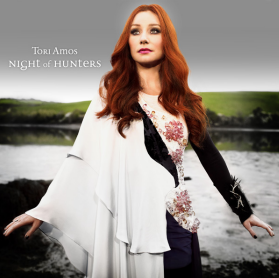Date Posted: October 3, 2011
Print Edition: September 28, 2011
 Tori Amos is recognized as a talent in the musical world, having garnered immense popularity in the 1990s and having received eight Grammy nominations. Her musical career began early; at the age of 11 she had already been asked to leave the Peabody Conservatory of Music (which she attended on a full scholarship), because even after years of study she disliked reading sheet music and the study of classical song. Despite her aversion to classical education, her musical ear remained strong, and her compositional skills continued to flourish. Her first single was released in 1977 at the age of 18. Now, in 2011, she has released her latest album, Night of Hunters.
Tori Amos is recognized as a talent in the musical world, having garnered immense popularity in the 1990s and having received eight Grammy nominations. Her musical career began early; at the age of 11 she had already been asked to leave the Peabody Conservatory of Music (which she attended on a full scholarship), because even after years of study she disliked reading sheet music and the study of classical song. Despite her aversion to classical education, her musical ear remained strong, and her compositional skills continued to flourish. Her first single was released in 1977 at the age of 18. Now, in 2011, she has released her latest album, Night of Hunters.
This is her first album released under the Deutsche Grammophon label after her leave from Universal Republic for financial and creative differences. Deutsche Grammophon (DG) is known for their classical music records. They came to North America at a time when classical artists were being dropped by their respective labels as they weren’t lucrative enough. DG made quality recordings of their music instead, which means they have a history of presenting classical music properly – a rare talent in this era of electric-dominated sounds. Another musician of note who records with DG is Philip Glass. Even if you don’t recognize his name, you have probably heard something he wrote; he has composed scores for many films including The Hours and Notes on a Scandal.
DG is an excellent choice for this album. Tori’s piano-driven melodies are accompanied by what sounds like a string quartet with very minimalistic sounds. Rhythm is predominately provided by the piano – in orchestration, the piano is actually considered a rhythm instrument, though contemporary music generally doesn’t use it as such. Any percussion instruments used are minimal and for effect, such as the chimes at the beginning of “Battle of Trees.”
Though it seems like classical music on paper, it’s very accessible for the average listener. The melodies and chord progressions are interesting – a tribute to the composer’s classical education (however brief). The second single, “Snowblind,” sounds more like something that belongs in a Zelda video game than on an orchestra stage.
Despite the modern sound many of the songs have, most are almost directly based on existing classical tunes. Among the artists emulated are Chopin and Schumann: those with classical training can tell you that this is an impressive feat for any pianist, even one who has been playing for so long. Both composers are known for creating technically heavy melodies that require great skill to play or replicate in any way. Another referenced musician is Sondheim, known for his musical theatre tunes (So if you like Glee, odds are you’ll like it). These are all pretty heavily classical examples, but Tori’s background playing rock piano means that she lends a certain edge to the sound.
Though it wasn’t apparent on the first listen, the album in its entirety is actually a song cycle. This means that all the songs relate to one another and tell a story. When the lyrics are isolated, this becomes more obvious – though it isn’t necessary for enjoying the album by itself. A further point of interest is that the album includes a second voice: Amos’ daughter, Natashya Hawley. At 11, her voice already emulates her mother’s, but with a more raspy quality – think Adele, but a little more young and pure. The song that features her is “Job’s Coffin”. If the CD doesn’t seem like your thing, this track is definitely worth the purchase on its own: her voice is great, her mother’s composing is better, and it’s not so far off from what’s on the radio now that your friends will judge you if they hear it in your car.

